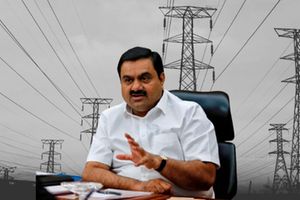
Inset: Indian billionaire Gautam Adani.
A decision by Adani Power to cut electricity supply to Bangladesh by half over an unpaid $800 million (Sh103.36 billion) has highlighted pitfalls Kenya may face in the proposed public-private-partnership (PPP) with the conglomerate to build power lines and substations in the country.
Adani Power— the energy subsidiary of Adani Group—has also threatened to suspend all supplies if Bangladesh does not clear the bill by Thursday. Adani supplies Bangladesh from its 1600-megawatt coal-fired plant in eastern India.
Experts now warn that Kenya risks a similar predicament if its 30-year PPP deal with Adani Energy to build power lines and substations is not well structured.
The Kenya Electricity Transmission Company (Ketraco) recently signed a deal with Adani Energy to build three power lines and two substations at a cost of$736 million (Sh95 billion at current exchange rates).
In the deal, Adani Energy will build the 208.73-kilometre 400 kilovolts (kV) Gilgil-Thika-Malaa-Konza, the 95km 220kV Rongai-Keringet-Chemosit, and the 70km 132kV Menengai-Olkalou-Rumuruti lines. It will also construct a 400/220kV substation at Lessos and Rongai 132/33kV Thurdibuoro substations in Kisumu.
The Indian conglomerate would then recover its money by charging homes and businesses a tariff. The deal has, however, been suspended by the High Court.
Laban Onditi, one of the initiators of the PPP concept in Kenya, claimed that the country risks suffering the Bangladesh experience because the government did not undertake a comprehensive feasibility study for the project and relied on investors to guide the deal.
“What feasibility study was done to inform this decision with Adani and the period of the deal? If you give an investor the right to do a feasibility study and use it as the basis for such a project, then you are in a mess,” he claimed.
John Mativo, managing director at Ketraco, however, said the State firm has undertaken feasibility studies of all projects lined up for the next five years but was non-committal on the Adani project when reached for comment.
“Ketraco undertakes feasibility for all projects to be undertaken in the next five years. Remember we have tried to get direct foreign investment funding through the National Treasury but the debt ceiling would not allow it,” said Mr Mativo.
The Ketraco boss said it is normal practice for PPP firms to withhold services if their investment is not repaid.
“From landlord to mama mboga, economics typically demands that services are withheld if you do not pay,” he told the Daily Nation last evening.
Kenya has turned to the PPP model to deliver electricity projects to revamp the grid, cut system losses, and boost supply.
An ageing transmission line and the use of distribution lines as transmission lines have been cited as major causes of power outages.
The blackouts are largely due to the inability of the network to support sudden spikes in demand, especially in the Western part of Kenya.
Besides Adani, Africa50 is also set to build the 400kV line from the Loosuk-Lessos line spanning 177km and the 64km 220kV Kisumu-Musaga Transmission Line.
Four other lines, each with a capacity of 132kV and substations are lined under the PPP model are Kisumu-Bondo-Rangala-Nyaga line, the Meru-Mau 132Kv line, Githambo-Othaya-Kiganjo line and Kitale-Tongaren-Webuye-Musaga lines.











